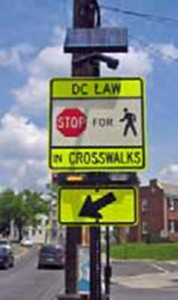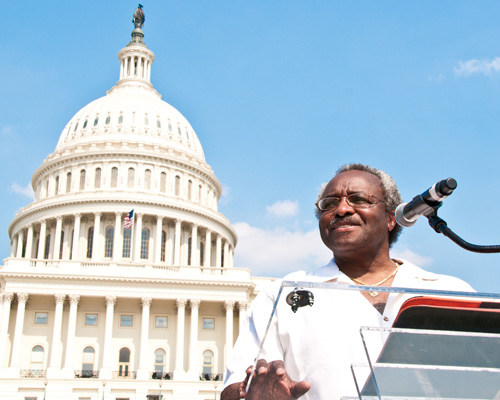Do you know the Rules of the Road?

RULES OF THE ROAD
BY LWTL Staff Writer
Publisher’s Note – This is the First of a Three Part Series on Pedestrian and Bicycle Safety. This First Part is made available to all readers. The final two parts will be available only to subscribers of Living with the Law. Subscribe today.
Introduction
Washington, D.C has much to distinguish it as a world-class city. One such distinction being the number one most traffic congested city in the U.S., according to the Texas A&M Transportation Institute 2012 Annual Urban Mobility Report. Traffic jams, crowded metro rides, and high gas prices, have increased bike riding in the District by 255.6% between 2000 and 2012 (Bicycle Commuting Data | League of American Bicyclists). Considered a Bicycle Friendly City, the District now ranks second in biking and walking (Alliance for Biking & Walking). Perhaps not surprisingly, the combination of increased vehicular, bicyclists and pedestrian traffic congestion in DC streets has resulted in an increase in total collisions in the District from 17, 955 in 2010 to 18, 428 in 2012, nearly 72% of these resulting in property damage and 29% in bodily harm. Bicycle crashes also showed a continuous increase almost doubling to 538 in 2012 from 2010. Crashes involving pedestrians also increased from 777 in 2010 to 919 in 2012. (DDOT Traffic Safety Crash Reports)
These alarming statistics provide the backdrop for Living with the Law's three part series which we hope will help to educate drivers, cyclists and pedestrians about their rights and responsibilities to themselves and each other as they navigate the City streets. Part I addresses current laws and rules for bicyclists including liability issues; Part II will focus on what Pedestrians need to know; and Part III will focus on the rules of the road for motorists including their rights and responsibilities towards pedestrians and bicyclists.
PART ONE OF A THREE PART SERIES - CIVIL CYCLING
Background
Since its establishment as the nation's capital in 1790, bicycles have been part of the street scene alongside buggies, streetcars and pedestrians. However, it was not until 1976 when commuting around DC by bike had more than doubled in response to the energy crisis of the ‘70s, that the District government adopted its first District Bicycle Plan to address infrastructure and safety issues. In 2003, the DC Department of Transportation (DDOT) found that between 1990 and 2000, bicycle commuting had increased by 55%, from a 0.75 percent share to a 1.16 percent share of all District-based work trips. Consequently, a Bicycle Master Planwas included as part of the District of Columbia Comprehensive Plan. The Bicycle Master Plan included recommendations for major infrastructure improvements to support bicycling in DC roadways public bicycle parking spots, increase bicycle safety through traffic calming measures, enforcement of regulations requiring private bicycle parking and improving bicycle access where barriers to bicycle travel exist.
In this article, we focus on major rights and responsibilities of bicyclists and liability issues when a collision occurs. Applicable laws and regulations can be found at D.C. Code § 50-1601-1652 and DCMR.Chapter: 18-1200 thru 1211, respectively.
General Provisions
In 2008, the requirement to have a bicycle operator license was revoked and no license is currently required, but bikes must be registered in DC, unless it is registered in another jurisdiction. Persons under 16 years of age cannot operate a motorized bicycle on any public space. Bicyclists have the same rights as drivers but must obey all traffic laws. Violations of bicycle laws and regulations do result in loss or suspension of your driver's license; and points will NOT accrue against your driver's license. However, you may be ticketed and fined for any violations. A schedule of infractions and fines is included in this article.
Traffic Rules
A bicyclist has the same duties as a driver to avoid endangering himself or herself and others. A bicyclist MUST... read the full article, Living With The Law --- Bike Safety Article (Part I) »






